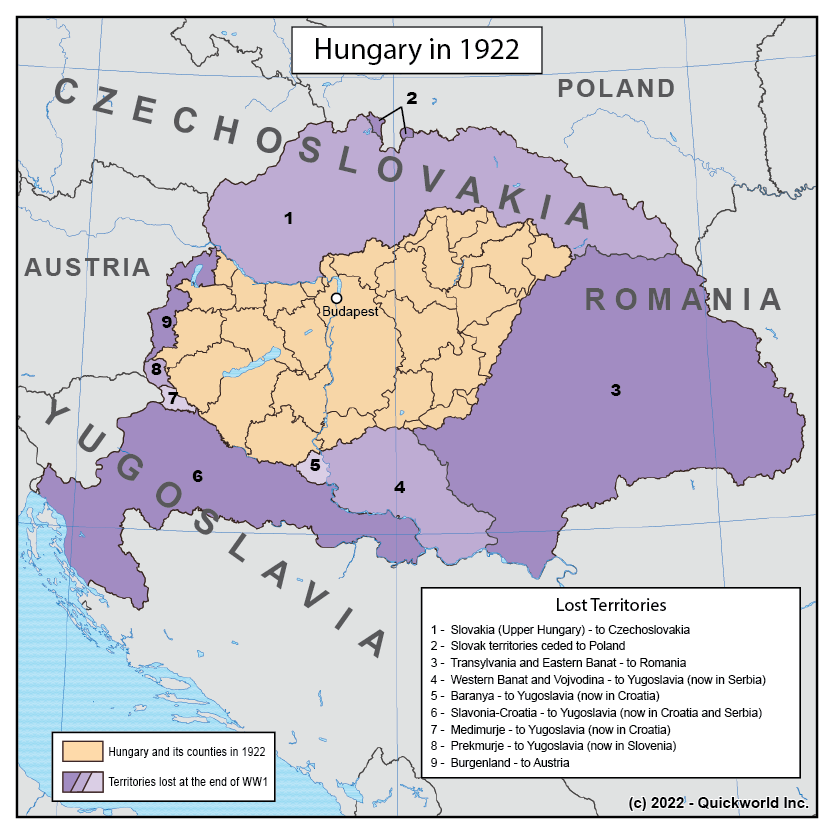The losses incurred by Hungary at the end of World War I, as a result of the Treaty of Trianon, have left a very deep mark on that country. In 1867, Hungary had obtained a large degree of autonomy from Austria, a country with which it had been in political union since 1526. As the junior partner in that dual-monarchy, it supervised a large land where ethnic Hungarians were the majority, as well as regions where Slavs, Germans and Romanians formed substantial parts of the population.
While the semi-autonomous Kingdom of Croatia-Slavonia seceded to join Serbia in a new Kingdom of Serbs, Croats and Slovenes, entire regions of the proper Kingdom of Hungary were passed to neighbouring countries: Transylvania was awarded to Romania, Upper Hungary became part of Czechoslovakia, while several border regions were awarded to Yugoslavia, and a Western sliver of land was awarded to Austria on ethnic grounds, even though substantial Hungarian populations were present in all those regions. Altogether, the 1919 Hungarian Republic only represented 40% of the pre-war territory. As of today, substantial ethnic Hungarians live in neighbouring countries, most significantly in Romania, Slovakia and Serbia.
More on Hungary
Hungary's WW1 Territorial Losses


